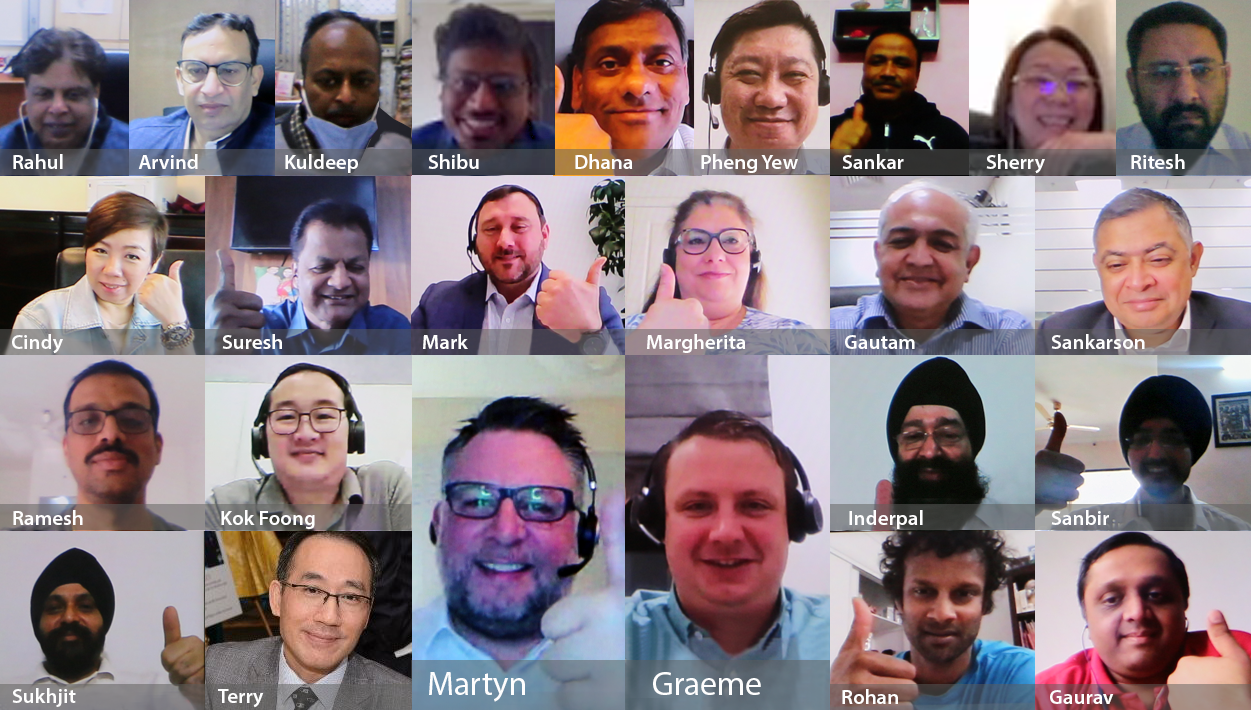
Until late-2019, the world witnessed and suffered numerous emergencies and disasters like wildfires, tornados, floods, etc. as individual nations and larger geographical regions. But it was only at the end of the year that the world was hit by a global pandemic that caught everyone totally off guard.
The scale and magnitude of the pandemic have heightened the need to be more resilient and prepared to manage multiple critical threats. In order to inform and educate organisations on this crucial area, OpenGov Asia organised an OpenGovLive! Virtual Insight on 25 November 2020 to discuss Organisational Resilience 2.0.
The virtual event witnessed a full house with delegates attending from a wide range of organisations from Singapore, India, Australia and Hong Kong.
Have well-orchestrated business continuity plans backed by technology

The session was opened by Mohit Sagar, Group Managing Director and Editor-in-Chief at OpenGov Asia. Mohit started by acknowledging the fact that the pandemic has made the world realise how unprepared we were to deal with something of that magnitude.
Business continuity plans and risk mitigation strategies were never designed for a situation like this. He emphasised that it is important for organisations to learn from all this and become more resilient for the next big critical event.
Not only do organisations need to keep their people and assets safe, but must also learn to keep their businesses running. Managing critical events should become a part of the business’s DNA and should not disrupt the daily functions frequently.
The need of the hour is to have a well-orchestrated business continuity plan that involves and takes into consideration every small aspect of an organisation’s structure and one that is backed by the latest technology.
In conclusion, Mohit advised the delegates to partner with experts who are seasoned critical management experts rather than trying to do everything on their own from scratch.
Everbridge’s critical event management suite will structure response and mitigate risk

Once Mohit set the stage for the topic at hand, Graeme Orsborn, Vice President – International CEM Business Unit, shared his views with the delegates.
Graeme started by providing a comprehensive overview of how Everbridge can assist in managing critical events. He shared ways in which critical events can impact an organisations’ people, assets and operations.
Interestingly, even today most organisations have manual, disjointed and siloed approaches to managing critical events. This makes it challenging to have them work in a synchronised manner.
The main goal of an integrated platform like the Everbridge CEM suite is to remove these silos and disjointed workflows and drive a more collaborated and effective effort. This coordinated and cohesive environment is conducive to implementing a common platform-based strategy.
He then proposed what organisations should ideally do to effectively manage a critical event. The four necessary steps include:
- Assess the context and severity of the event
- Locate stakeholders and assets
- Act by informing, notifying, rallying, mitigating and fixing the impact
- Analyse the organisation’s performance by reporting, complying and learning
These are four components form the ethos of the Everbridge critical event management suite and everything is built on these pillars.
Graeme concluded his address by explaining how automation of the management process can help enhance organisational resilience in the new normal.
The Scottish Local Government’s phased approach of dealing with the COVID-19 pandemic

After Graeme, Martyn Wallace, Chief Digital Officer, Scottish Local Government Digital Office gave a summary of how they managed the COVID-19 pandemic.
The Scottish government followed a phased approach comprising of 3 major phases in dealing with the global pandemic:
– Response
– Recovery and
– Renewal
In the Response Phase, they focused on establishing incident response mechanisms, cross-sectional workforces and supporting the staff to work from home.
In the Recovery Phase, they focused on digital transformation, remote learning and strengthening cybersecurity.
In the final phase of Renewal, they focused on digital maturity, review of services and accessing key data and driving insights from it.
Martyn concluded his address by sharing certain principles that governed this process. They are:
- instantaneous decision making
- empowering the workforce and organisation as a whole to work together effectively
- deploying tools that enable active communication
- working as a team without silos or egos
- working to achieve a common set of goals

Organisations need to be agnostic and agile in managing critical events
After Martyn’s insightful sharing, Mark Shortman, Principal and Head of Crisis and Resilience Consulting, Asia Pacific, Control Risks offered his take with the audience.
After briefly introducing his company, Mark explained the following three ways in which they assist organisations to solve complex issues and crisis:
- Building secure, reliant, and resilient organisations
- Resolving complex issues
- Delivering growth and opportunity
He emphasised the need to be agnostic and agile in managing crisis so that business as usual is maintained with no fatigue in dealing with crises.
Mark concluded his presentation by advising the delegates to opt for the technology-enabled Control Risks and Everbridge platform with numerous response and continuity that can help organisations improve resilience.
He encouraged the delegates to share their challenges and be involved in conversations with experts so that they can choose the most suitable solution for them.
After the informative presentations, it was now time for the interactive polling session.
On the first question about organisations’ preparedness to respond quickly and decisively to critical events, a majority of the delegates voted that they are well prepared but there is room for improvement (80%).
A delegate from a major bank in Australia shared that preparedness depends on geographical location and experience of dealing with crisis and pandemic. He also believes that increasing dependence on technology and the workforce’s inability to quickly adapt is a major challenge.
On the next question about having a companywide alert mechanism through various tech channels, the delegates seemed divided between yes, they have it all sorted out (41%) and they have some communication but not sure of its effectiveness (58%).
A participant from Singapore reflected that they have a mix of the traditional and modern ways of communicating like calling, email, SMS etc. They are also promoting using internal social media for this purpose.
On the final question about the instant access to critical information needed to evaluate risks and take proper action during emergency events, the delegates were yet again divided between they have established systems (53%) and they are looking for comprehensive, interactive visualisation platform (46%).
A delegate from an Indian agency shared that because their primary job is to keep track of this information and alert masses and engage local agencies about the impending crisis, they have well set up systems to access information quickly. But he also agreed that there is always room for improvement.
After the polling session, Graeme addressed the audience to close the session. He expressed his deep gratitude to the participants for taking the time to join the session and for their insightful contributions to the topic at hand.
He left the delegates with a simple but powerful message highlighting the importance of Prepare, Pursue, Protect and Prevent; ad these 4 Ps need to be executed with Speed, Scale and Simplicity (3Ss). These are the key components of the Everbridge Critical Event Management Suite.
Graeme urged the delegates to not let the experience from the pandemic go to waste but to learn to be better prepared and more resilient.
















